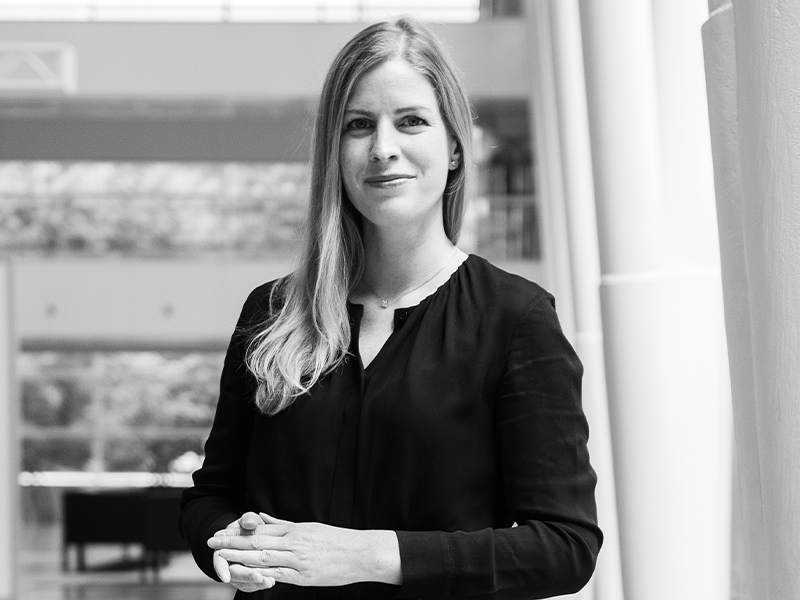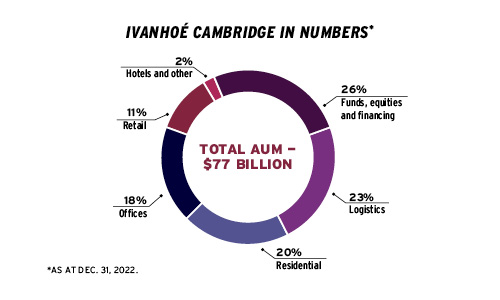
Since joining the real estate investment arm of the Caisse de dépôt et placement du Québec in 2017, Michèle Hubert has held many titles — five, to be exact.
“My career is much more consistent than that makes it sound,” says Hubert, Ivanhoé Cambridge’s chief operating officer. “I’ve always been involved in strategy and I’m now involved in strategy, risk, research and sustainable investment.”
In 2017, she joined the investment organization as its director of strategic planning. “I’m always trying to be in learning mode. . . . I really believe in the importance of getting advice and two
pieces really stand out from my first months here.”
Read: Ivanhoe Cambridge CEO to retire, successor appointed
Getting to know Michèle Hubert
Job title:
Chief operating officer, Ivanhoé Cambridge
Joined Ivanhoé Cambridge:
2017
Previous roles:
Vice-president of research, strategy and transformation, Ivanhoé Cambridge
What keeps her up at night:
Thinking about ways to improve Ivanhoé Cambridge’s decision-making process to ensure it can deliver the strongest returns
Outside the office she can be found:
Discovering and learning about new places, their histories and cultures with her family
One piece of advice she calls particularly useful in her current role was to familiarize herself with the overall organizational structure at Ivanhoé Cambridge and her colleagues’ areas of expertise. The other was to consider the advantages of working in different industries. “It’s helpful to look at everything with fresh eyes and a fresh perspective. . . . That’s especially important given the structural trends impacting real estate and when it comes to sustainable investing, where we can’t rely on existing models.”
After four months, Hubert was offered an ideal opportunity to learn about the inner workings of the organization as the chief of staff to then-chief executive officer Daniel Fournier. “It was a rich experience. I ended up with a global view of our organization and was able to meet many of our key partners.”
Late in her two-year term as chief of staff, Ivanhoé Cambridge underwent a major strategic repositioning, which Hubert refers to as the pivot. “It started with a strategic exercise to ask ourselves what the major trends were. They were structural and we wanted to use demographic, technological and climate data to better align the portfolio to future needs.”
As part of the pivot, the first move was to reduce allocations to two asset classes that represented close to two-thirds of the total portfolio — retail and office space. “Quality office and retail assets with a focus on experience or densification opportunities still play a role in our portfolio, but we knew we had to reduce our overall exposure to these sectors to make space for themes we wanted to grow in — like housing and logistics.”
By the end of 2019, Ivanhoé Cambridge had reduced this portion of its portfolio, while the share invested in industrial and logistics facilities rose from 10.7 per cent to 15 per cent during the year. “It was all about being intentional,” says Hubert. “On the portfolio side, we diversified towards sectors better aligned with long-term trends, while reducing our exposure to traditional office and retail assets.”
These moves proved fortuitous when the coronavirus pandemic created strategic challenges for those seeking to reposition institutional real estate portfolios. “Never wait out a crisis — we kept working and completed the rebalancing and repositioning and we can now focus on what’s ahead.”
During this time, Hubert became vice-president of strategy and transformation, a role aligned with her expanded list of pivot-related responsibilities. It changed again in 2021 when she was named vice-president of research alongside her other duties. “The pivot gave me the opportunity to shift from a strategy advisory role to leading execution and change implementation.”

Since 2022, when Hubert became Ivanhoé Cambridge’s chief operating officer, her responsibilities have expanded further, including co-ordinating global operations, improving cross-team synergy and bolstering risk and return integration within its portfolio, as well as activities related to risk, research, sustainable investment and strategy.
Her team is also playing a key role in implementing innovative ways to support investment selection, asset management and risk-return optimization. “This is essential to deliver on our mission. . . . Asset management and portfolio optimization will be key differentiating performance drivers for real estate investors over the next few years.
Gideon Scanlon is the former editor of the Canadian Investment Review.
